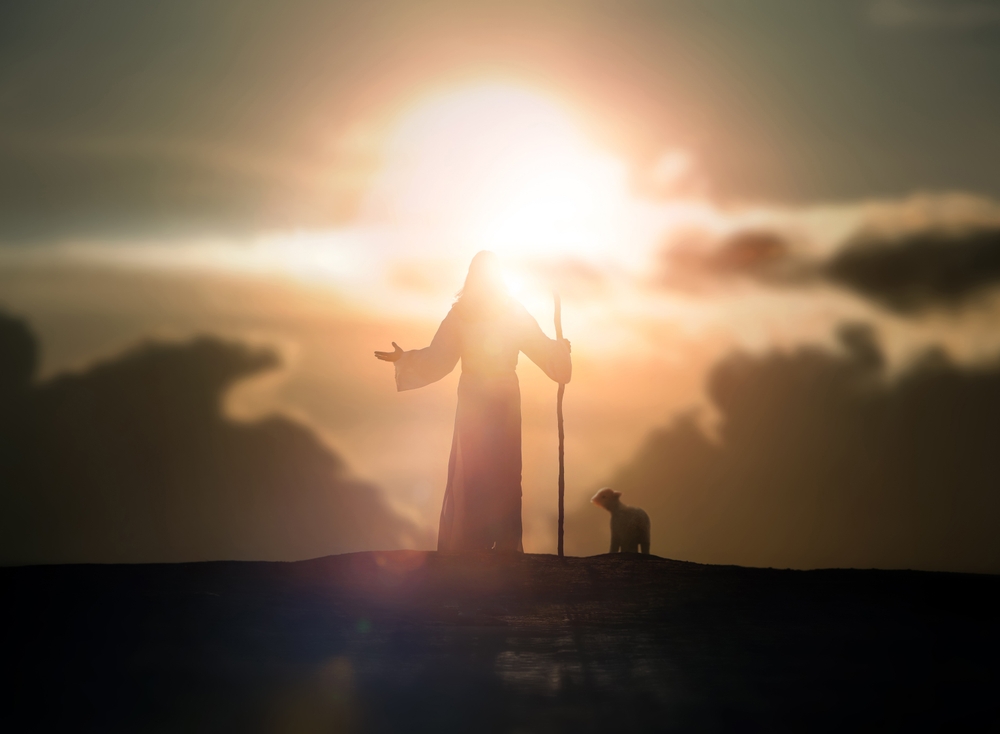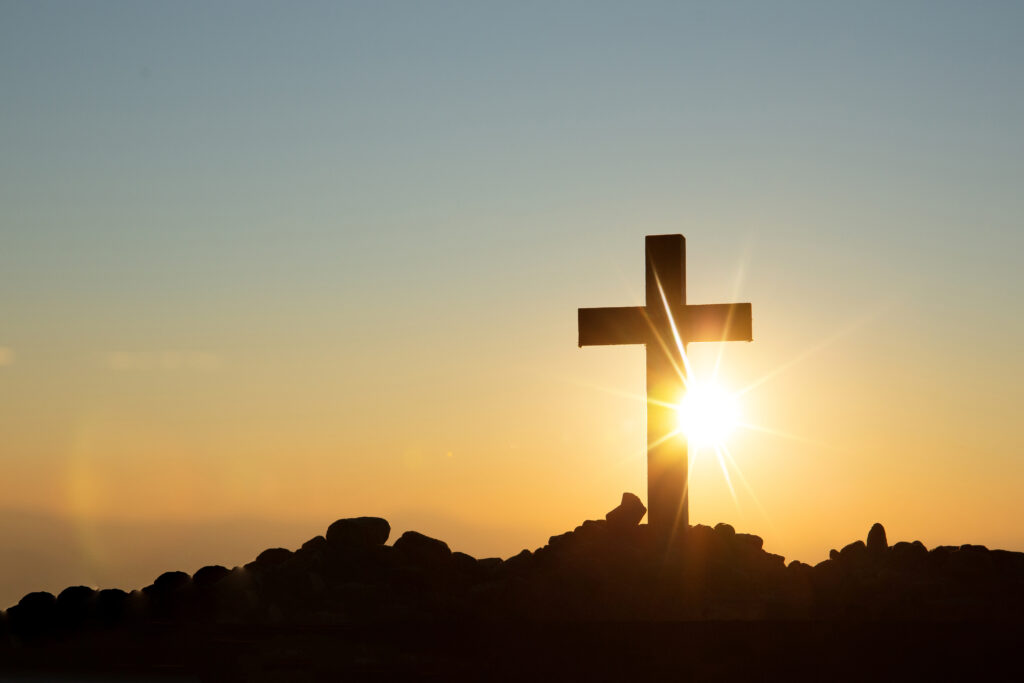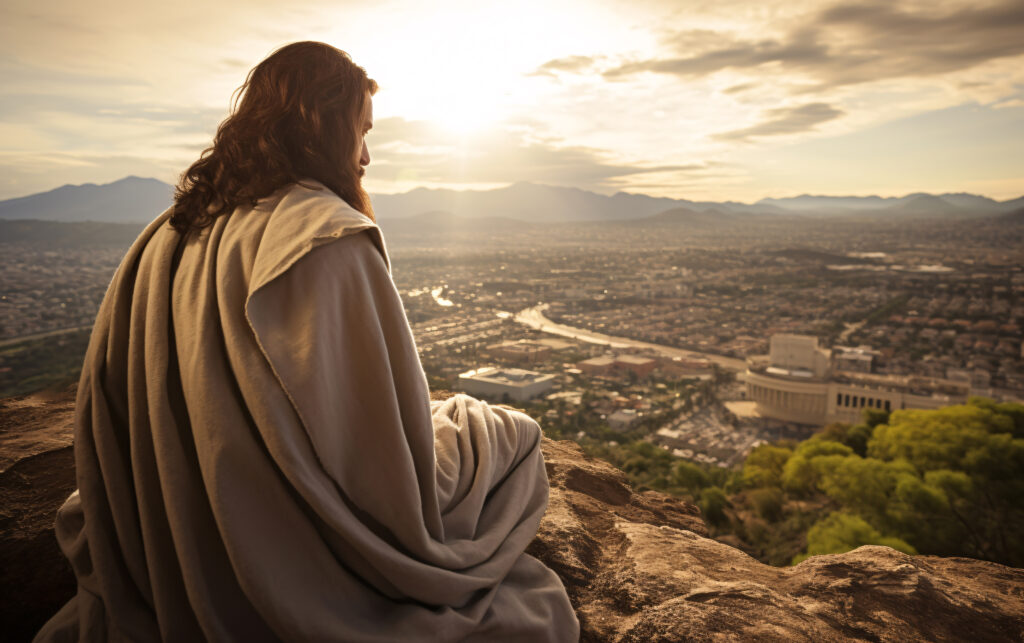Your cart is currently empty!
True Face of Jesus’ is Brought Back to Life With Modern Breakthrough

What if the most recognized face in human history—reproduced in stained glass, Renaissance frescoes, and Sunday school coloring books—was never close to the truth? For centuries, the image of Jesus Christ has remained frozen in Western imagination: fair-skinned, light-haired, and ethereal. Yet nowhere in scripture is his appearance described, and no image from his lifetime exists. Now, in an era where artificial intelligence can animate ancient texts and resurrect the past with startling precision, one of Christianity’s most sacred mysteries is being revisited through the lens of machine learning.
A recent AI-generated video, using data drawn from the Shroud of Turin, has sparked both awe and controversy by producing what some claim is a “true face” of Jesus—complete with blinking eyes, subtle expressions, and haunting realism. But can a machine decode divinity? And how does this modern portrayal align—or clash—with archaeological evidence, historical context, and cultural tradition?
As technology confronts theology, and pixels attempt to reconstruct prophecy, a deeper question emerges: do we want accuracy, or affirmation? The answers lie not just in fiber and image, but in a story that stretches from ancient tombs to cutting-edge code.
The Enduring Mystery of the Shroud of Turin

Few religious artifacts have stirred as much fascination, skepticism, and scholarly debate as the Shroud of Turin. Measuring approximately 14 feet long and 3.5 feet wide, this linen cloth bears the faint yet detailed image of a man who appears to have endured trauma eerily consistent with Roman crucifixion practices—thorn wounds on the head, scourge marks across the back, and punctures to the wrists and feet. For many Christians, these features offer compelling evidence that the Shroud may have been the burial cloth of Jesus Christ. For scientists, however, it remains one of history’s most persistent enigmas.
The earliest confirmed appearance of the Shroud in historical records dates to the 1350s in France, though its existence and origin prior to that remain unknown. By 1578, it had been moved to its current home in the Cathedral of San Giovanni Battista in Turin, Italy, where it has remained under guarded care. It has since become an object of pilgrimage and veneration, shown to the public only on rare occasions, with millions traveling to glimpse what some believe to be a physical connection to Christ.
The controversy surrounding the Shroud intensified dramatically in 1988 when a team of researchers conducted radiocarbon dating on a small piece of the fabric. The results placed the cloth’s origin between 1260 and 1390 AD—well over a millennium after the crucifixion of Jesus. These findings led many to dismiss the Shroud as an impressive but ultimately medieval forgery. However, this conclusion was not universally accepted. Critics argued that the sample used may have come from a repaired section of the cloth, and that centuries of exposure to fire, moisture, and handling could have contaminated the fibers, skewing the dating results.

In 2022, a new chapter in the Shroud’s scientific study emerged. Italian researchers employed X-ray fluorescence (XRF)—a technique that measures the atomic composition of materials without causing damage—to reanalyze the fabric. Their findings, published in the journal Heritage, dated the cloth to between 55 and 74 AD, aligning closely with the time of Jesus’s crucifixion. This more precise technique also included comparative analysis with linen samples from Masada, Israel—textiles of known first-century origin—which showed strong similarities in their chemical signatures.
Lead researcher Dr. Liberato De Caro emphasized that the 1988 carbon dating may have failed due to incomplete cleaning of the samples: “Fabric samples are usually subject to all kinds of contamination… if the cleaning procedure of the sample is not thoroughly performed, carbon-14 dating is not reliable.” His comments reflect a growing recognition that scientific conclusions, like faith, evolve with method and context.
Despite decades of analysis and over 170 peer-reviewed studies, no definitive consensus has been reached. Some argue the Shroud is a medieval artistic creation; others maintain that it is a supernatural imprint of the moment of resurrection. What is undeniable is the Shroud’s enduring ability to ignite inquiry, inspire devotion, and bridge the often-fragile divide between faith and science.
What Did Jesus Really Look Like? Forensic and Scholarly Insights

One of the most respected efforts in this field came from British medical artist Richard Neave, who in the early 2000s applied forensic techniques to reconstruct the face of a man who would have lived in Jesus’s time and region. Collaborating with Israeli archaeologists, Neave obtained three Semite skulls from first-century sites near Jerusalem. Using computerized tomography (CT scans), his team created detailed X-ray “slices” of the skulls, which were then used to build a 3D digital model. From this data, a clay reconstruction was formed, informed by known tissue depths and facial muscle structure typical of Galilean Semites.
The result was a stark departure from the traditional Western image of Jesus. Neave’s model depicted a man with a broad face, dark skin, short curly hair, a thick beard, and deep-set eyes—an appearance consistent with archaeological findings and ancient Jewish burial portraits, such as those found in Egyptian mummy paintings from the same period. These portraits show men with brown skin and dark eyes, distinct from the fair-skinned Jesus depicted in Renaissance art.
Biblical clues, though sparse, also support the idea that Jesus looked ordinary by the standards of his time. According to the Gospel of Matthew, Judas Iscariot had to identify Jesus with a kiss to Roman soldiers, implying that he was physically indistinguishable from his disciples. This further weakens the notion of a tall, light-haired figure who would have stood out in a Middle Eastern crowd.
Hair length is another point of contention. While artistic tradition has long shown Jesus with long, flowing locks, forensic scholars argue that first-century Jewish men typically wore their hair short and maintained beards, in accordance with religious custom. Some scholars point to 1 Corinthians, where the Apostle Paul—who claimed to have seen Jesus—describes long hair on men as disgraceful, suggesting that Jesus himself likely adhered to cultural norms of grooming.
Skeletal analyses of Jewish men from the period also inform assumptions about Jesus’s physique. The average height was around 5 feet 1 inch, with a lean but muscular build—attributes that align with the life of a manual laborer like a carpenter. Given his itinerant lifestyle and physical work, Jesus was likely more rugged and weathered than many idealized portrayals suggest.
Cultural Representations of Christ Through the Ages

The image of Jesus has never been fixed; it reflects the values, beliefs, and artistic conventions of the societies that produced it rather than strict historical accuracy. In early Christian art, direct depictions of Jesus were rare due to concerns about idolatry. When portrayed, he often appeared symbolically, such as the Good Shepherd—a youthful, beardless figure inspired by Greco-Roman gods like Hermes or Apollo, emphasizing his role as caretaker rather than focusing on physical traits.
As Christianity gained imperial status within the Roman Empire, portrayals of Jesus shifted to present him as a bearded, authoritative figure in robes, resembling philosophers or emperors. This visual language signaled power and divine legitimacy. The Renaissance further transformed Jesus’s image, with artists like Leonardo da Vinci and Michelangelo painting him with fair skin, soft features, and flowing hair, reflecting European ideals of beauty and spirituality. This era cemented the widely recognized Western image of Jesus—one that distances him from his Middle Eastern roots.
In the 20th century, Warner Sallman’s “Head of Christ” (1940) became perhaps the most reproduced portrait worldwide, presenting Jesus with pale skin, light eyes, and auburn hair. Originally created for evangelical audiences in the United States, this image became ubiquitous, shaping popular imagination across denominations and continents. However, it also reinforced a homogenized, Eurocentric view of Jesus, linking divinity with whiteness and influencing social and theological perceptions of race.
Recent decades have seen growing challenges to this dominant portrayal. Scholars, theologians, and activists argue that the “white Jesus” serves to uphold racial hierarchies and cultural supremacy, often sidelining the diverse identities of Christian communities worldwide. Alternative depictions flourish in regions such as Ethiopia, India, and Latin America, where Jesus is portrayed with features and skin tones reflecting local populations. These images affirm the universality of Christ’s message and question any single visual representation as definitive.
Faith vs. Forensics: What Truly Matters?

As science and technology inch ever closer to visualizing the past with astonishing precision, a deeper question inevitably surfaces: How much does it matter what Jesus looked like? For many believers, the face of Christ—whether imagined through ancient cloth, forensic modeling, or AI renderings—is secondary to the teachings, compassion, and spiritual legacy he left behind. The tension between historical accuracy and spiritual significance invites reflection not just on who Jesus was, but on what he represents across cultures and centuries.
Theologians have long emphasized that Jesus’s message transcends physicality. His teachings on love, forgiveness, humility, and justice remain foundational to billions of people worldwide, regardless of race or background. As Dr. Meredith Warren, a senior lecturer in Biblical and religious studies at Sheffield University, noted, “What matters most about Jesus isn’t what he looked like, but how his life and teachings continue influencing billions worldwide.” Her point echoes a widely held sentiment: that faith is grounded in meaning and morality, not visual confirmation.
And yet, images matter—especially in a world where representation carries social and psychological weight. For centuries, the dominance of a Europeanized Christ in Western art and media subtly reinforced a theological hierarchy aligned with race and empire. This has led many contemporary Christians and scholars to reassess how portrayals of Jesus intersect with issues of identity, inclusion, and historical truth.
The emergence of AI-generated interpretations, such as the Midjourney reconstruction based on the Shroud of Turin, offers both opportunity and caution. On one hand, it sparks renewed curiosity about the historical Jesus and makes ancient debates accessible to a broader public. On the other, it risks reinforcing old visual tropes shaped by artistic tradition rather than anthropological evidence. Even as the technology advances, the core dilemma remains: is it revealing something authentically ancient, or merely updating a familiar fiction?
Can a Machine Capture the Sacred?

Bringing together an ancient relic and modern technology like this AI reconstruction of Jesus’ face is pretty fascinating—and it makes you stop and think. Sure, the image is striking, but it also highlights how complicated it is to separate history, culture, and personal beliefs when we look back so far. The Shroud of Turin remains a puzzle that continues to draw interest from believers, skeptics, and scientists alike.
AI gives us cool new ways to explore history, but it’s not a magic answer. What these digital portraits really do is open the door to fresh conversations about who Jesus was and what he means to us today. It’s less about nailing down an exact face and more about sparking curiosity and respectful discussion.
At the end of the day, what Jesus looked like probably matters less than the message he left behind. His teachings about kindness, forgiveness, and justice still resonate with millions around the world. This modern breakthrough isn’t just about recreating an image—it’s a reminder that faith and inquiry can work together, helping us connect with both history and what it means to be human.
